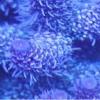Concur, Pants is very knowledgeable on the subject.
<soapbox>
Strongly believe dinos are present in every system. Dinos will rear its ugly head when conditions are ideal. The challenge some hobbyists are facing is recognizing/avoiding the conditions and promptly taking action so dinos do not become a nuisance. What are those conditions? Many have theories as do I, but I do not know if anyone truly knows.
I fought with dinos twice; the first time was in 1991. My system was a toxic soup. Fish and snails were dropping like flies. It may have been a coincidence, but one common theme between the two instances was the food web was not fully mature. The system matured and I worked hard to build the food web from the ground up (plankton, phytoplankton, sponges, filter feeders, etc.) the dinos faded away. Some may remember when it was popular to dose DTs. Ordered a bottle from Marco earlier this week. Sorry, I digressed. I think establishing strong flora and fauna is key, especially for systems less than 12 months old.
Do not get discouraged. Dinos have been known to drive hobbyist out of the hobby. Continue to build your food web and avoid using chemicals (Algae X and H2O2) that will destroy your food web.
Excerpt from Hoppenrath, Mona and Juan F. Saldarriaga. 2012. Dinoflagellates. Version 15 December 2012
"Dinoflagellates are common organisms in all types of aquatic ecosystems. Roughly half of the species in the group are photosynthetic (Gaines and Elbrächter 1987), the other half is exclusively heterotrophic and feeds via osmotrophy and phagotrophy. As a consequence, they are prominent members of both the phytoplankton and the zooplankton of marine and freshwater ecosystems.
The main ecological significance of dinoflagellates lies elsewhere, though. They are second only to diatoms as marine primary producers. As phagotrophic organisms they are also important components of the microbial loop in the oceans and help channel significant amounts of energy into planktonic food webs. As zooxanthellae, dinoflagellates have a pivotal role in the biology of reef-building corals."
</soapbox>












